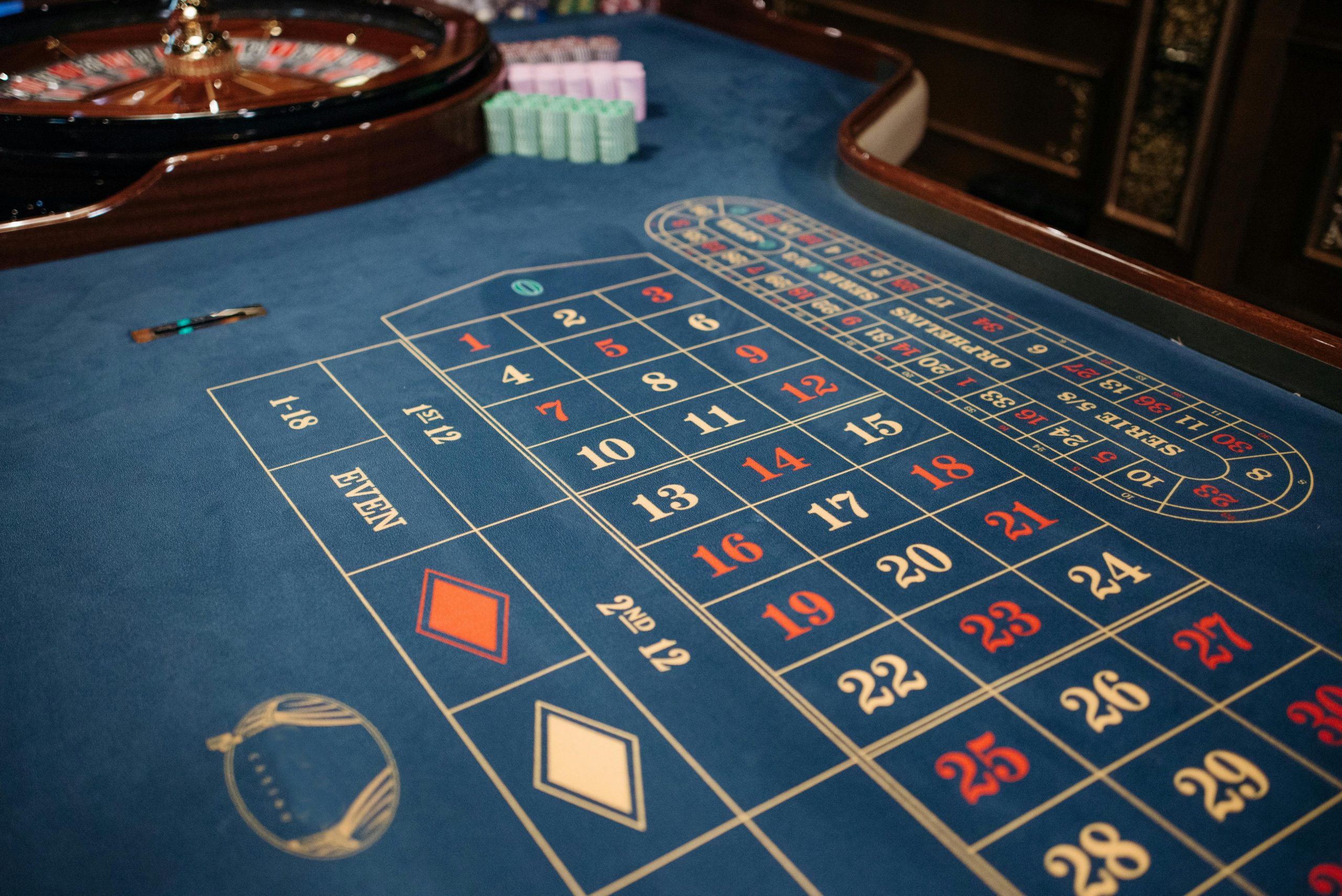Roulette is one of the most iconic casino games, known for its spinning wheel and the small ball that determines your fate. It’s the king of all games of chance, but understanding the odds and different types of bets can increase your chance of winning.
If you never played and don’t know where to start, here is a clear, beginner-friendly guide. It covers everything you should know about the roulette game, from the types of bets to the differences between the European wheel and the American version.
The Basics of Roulette
Roulette is as straightforward as it is thrilling, but here’s the key concept of the game: players place bets on where they think the ball will land on the wheel.
There are two main types of roulette: European and American, and the main difference is the number of slots they have in total, which will inevitably influence your chances.
- American Roulette: 38 slots (numbers 1-36, 0, and 00)
- European Roulette: 37 slots (numbers 1-36 and 0)
In some casinos, you may also find French roulette. It’s not as common but still worth checking out for its player-friendly rules. If you’re interested, we suggest you take a look at our post covering all types of roulette and their rules.
Roulette Bets and What They Cover

Roulette betting can be divided into two main categories: inside bets and outside bets. These terms refer to where the bets are placed on the roulette table layout.
Inside Bets
- Straight Up: Betting on a single number. The payout is 35 to 1, and the probability of winning is 2.7% in European roulette and 2.6% in American roulette wheel.
- Split: Betting on two adjacent numbers. The payout is 17 to 1, with a winning probability of 5.4% (European) and 5.3% (American).
- Street: Betting on three numbers in a row. The payout is 11 to 1, with a winning probability of 8.1% (European) and 7.9% (American).
- Corner: Betting on four numbers that form a square. The payout is 8 to 1, with a winning probability of 10.8% (European) and 10.5% (American). An example of a corner would be betting on numbers 4, 5, 7, and 8. In this case, you’d need to place your chip at the intersection where these four numbers meet.
- Line: Betting on six numbers in two rows. The payout is 5 to 1, with a winning probability of 16.2% (European) and 15.8% (American).
Inside bets are placed on the inner section of the roulette table, where the individual numbers are located, in the middle or “inside” part of the betting area. Since you’re betting on specific numbers, the chances of winning are low, but if you do win, the payouts can be quite high.
Outside Bets
- Red or Black: Betting on the color of the number. The payout is 1 to 1, with a winning probability of 48.6% (European) and 47.4% (American).
- Odd or Even: Betting on whether the number will be odd or even. The payout is 1 to 1, with a similar winning probability as Red and Black.
- High or Low: Betting on whether the number will be high (19-36) or low (1-18). The payout is 1 to 1, with the same winning probability as Red/Black and Odd/Even.
- Dozens: Betting on one of the three groups of twelve numbers (1-12, 13-24, 25-36). The payout is 2 to 1, with a winning probability of 32.4% (European) and 31.6% (American).
- Columns: Betting on one of the three vertical columns of numbers. The payout is 2 to 1, with the same winning probability as Dozens.
Outside bets are placed on the outer section of the table, in the boxes around the perimeter of the numbered grid. These bets cover larger groups of numbers and are generally less risky, so they’re great options if you want to start safe, even if the payouts are lower.
House Edge and Roulette Odds
The house edge is the built-in advantage that a casino has over players in any given game. If you’re wondering why, here’s the long story short: casinos are businesses that need to make money to cover operating costs, pay employees, and generate profit. The house edge makes sure that casinos can stay financially sustainable with a predictable source of revenue over time while keeping the edge low enough to be attractive to players.
Does this mean casinos are tricking their clients? Not at all — while the house edge gives the casino an advantage, it doesn’t prevent players from winning. It simply means that, on average, the casino will win a small percentage of all placed bets.
So, what does a house edge imply for the players? That all depends on the type of roulette game you’re playing.
In the European version, which has 37 numbers, including a single zero, the house edge is 2.7%. The presence of the zero gives the casino its edge because bets on individual numbers pay 35 to 1, but the true odds are 36 to 1.
In the American version, which has 38 numbers, single zero (0) and double zero (00) included, the house edge is 5.26%. The addition of the double zero increases the house edge, as bets on individual numbers still pay 35 to 1, but the true odds are 37 to 1.
If you have the option, go for European roulette. The odds are slightly better for the player compared to American roulette because of the lower house edge.
Strategies and Tips
While no strategy can guarantee a win, some players use betting systems to manage their bets and potentially reduce losses. Here’s a quick overview of two popular systems, with pros and cons so you know which one is best for you.
Martingale System
With this system, you start with a small bet on an even-money outcome (like Red or Black). If you lose, double your bet on the same outcome. Repeat this until you win, then return to your original bet size.
Pros: You can recover all your losses in one win.
Cons: You’ll need a large bankroll for this and, depending on the casino, you may hit table limits quite fast.
What are table limits, you ask?
Casinos apply certain limits on the minimum and maximum bets you can place. Some apply very high limits, while others are stricter. The reason they exist in the first place is to limit the casino’s potential losses in case the players’ winnings get really, really high.
Table limits can impact the effectiveness of certain betting systems, including the Martingale system. If you keep doubling your bet after each loss, you might quickly reach the maximum bet limit, making it impossible to continue the strategy.
To help you visualize this more clearly, here’s an example that uses the Martingale strategy:
Minimum bet: £50
Maximum bet: £1,000
- First bet: £50 (if you lose, your total loss is £50)
- Second bet: £100 (if you lose, your total loss is £150)
- Third bet: £200 (if you lose, your total loss is £350)
- Fourth bet: £400 (if you lose, your total loss is £750)
- Fifth bet: £800 (if you lose, your total loss is £1,550)
- Sixth bet: £1,600 (you can’t place this bet because it exceeds the table limit of £1,000)
As you can see, you quickly reach the table’s maximum bet limit after just five losses. This restricts your ability to continue doubling your bet as the Martingale system requires.
Fibonacci System
In this system, you bet according to the Fibonacci sequence. If you have no idea what we’re talking about, the sequence starts like this: 1, 1, 2, 3, 5, 8, 13, 21, 34, and so on. Each number is the sum of the previous two numbers.
In the context of betting, you use this sequence to determine the size of your bets.
Begin by betting the smallest unit of your bankroll. For simplicity, let’s use £1 as the base unit. If you lose, move to the next number in the Fibonacci sequence for your next bet. If you win, move back two numbers in the sequence. If you are at the start of the sequence (positions 1 or 2), just go back to the beginning.
What you need to do is basically increase your bet following the sequence after a loss and move back two steps in the sequence after a win. That’s it.
Pros: Less aggressive than the Martingale system, as the bet increases are slower. It also provides a clear plan for how much to bet, helping you make logical decisions instead of letting emotions guide you.
Cons: You can lose a lot of money if you encounter a long losing streak (other than the chance of hitting the table limits).
A Couple of Roulette Tips for You
As we mentioned, roulette is a game of chance. As such, each spin of the roulette wheel is independent. It’s easy to fall into the gambler’s fallacy, so always keep in mind that past results do not affect future outcomes.
If you don’t feel confident enough to bet real money yet, many online casinos offer free versions of roulette. Take advantage of them to practice and develop your favorite strategies without risking real losses.
Good luck, player!


